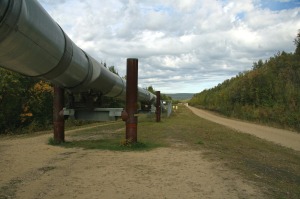Recently, all major environmental groups including, Natural Resources Defense Council, Sierra Club, Environmental Defense Fund, Earthjustice, and Clean Air Task Force—released a summary report, to the U.S. Environmental Protection Agency (EPA). The report lays out how EPA can cut methane emission by half with low cost technology and sustainable practices.
The report titled: “Waste Not: Common Sense Ways to Reduce Methane Pollution from the Oil and Natural Gas Industry” says that they can “show how the U.S. Environmental Protection Agency (EPA) can fulfill the agency’s duty under the Clean Air Act to cut in half dangerous, wasteful methane pollution from the largest industrial source—the oil and gas industry—in just a few years, using common sense standards based on available, low-cost control measures for a targeted set of pollution sources.”
Methane the other potent greenhouse gas
 The focus has always been on carbon dioxide emission in the past, while combating global warming and greenhouse gas emission. However, recently it has been discovered that methane is roughly 30 times more potent as a heat-trapping gas. (ScienceDaily). The reason why scientists are so concerned about methane is because it’s a heat trapping gas.
The focus has always been on carbon dioxide emission in the past, while combating global warming and greenhouse gas emission. However, recently it has been discovered that methane is roughly 30 times more potent as a heat-trapping gas. (ScienceDaily). The reason why scientists are so concerned about methane is because it’s a heat trapping gas.
“If methane is allowed to leak into the air before being used—from a leaky pipe, for instance—it absorbs the sun’s heat, warming the atmosphere. For this reason, it’s considered a greenhouse gas, like carbon dioxide.” – says Environmental Defense Fund
Although methane doesn’t stay in the atmosphere as long as carbon dioxide does, its heat absorbing properties make it a dangerous greenhouse gas. It also methane warms the climate at least 80 times more than an equal amount of carbon dioxide in the first two decades of emission. So, reducing both types of emission is equally important, if we want to want to effectively reduce the impact of climate change.
The main sources of methane emission
 Methane is released into the atmosphere through both natural and human sources. Natural resources including the oceans wetlands and animals creating 36% of methane emissions. The other 64% is human created, emission, created from sources such as landfills, factories, livestock farming, transportation and use of fossil fuels. (What’s Your Impact)
Methane is released into the atmosphere through both natural and human sources. Natural resources including the oceans wetlands and animals creating 36% of methane emissions. The other 64% is human created, emission, created from sources such as landfills, factories, livestock farming, transportation and use of fossil fuels. (What’s Your Impact)
According the summary report, “most of the industry’s methane pollution comes from leaks and intentional venting that can be identified and curbed with existing, low-cost technology and better maintenance practices.”
Associate vice president for U.S. Climate and Energy at the Environmental Defense Fund, Mark Brownstein, has also said that “Methane leaks are simply a waste of a valuable national energy resource. The good news is that there are simple technologies and practices that the oil industry can use to substantially reduce this waste, creating new opportunities for American companies and new jobs for American workers.”
 The standards suggested in this report are thought to be 10 times more effective in cutting methane emission than other suggested proposals. It would also cut down smog forming pollutants more, four times more than other proposals, because these standards would apply to all oil and gas infrastructures across the United States, not only to certain areas which are equipment located.
The standards suggested in this report are thought to be 10 times more effective in cutting methane emission than other suggested proposals. It would also cut down smog forming pollutants more, four times more than other proposals, because these standards would apply to all oil and gas infrastructures across the United States, not only to certain areas which are equipment located.
The best option for us is to use as little fossils as possible. Deb Nardone, director of the Sierra Club’s Beyond Natural Gas campaign believes that all fossils are best kept in ground. “fracking threatens to transform our most beautiful wild places, our communities and our backyards into dirty fuel industrial sites.”
So EPA must act quickly to control methane emission from existing shale gas extraction operations. Clean energy sources are already looking promising Finding clean alternatives would definitely be a sustainable way of addressing all those issues associated with fossils and greenhouse gas emission issues.
Our Bi-Weekly NTP/CEED Huddle webinar guest Dr. Robert W. Howarth, Professor of Ecology & Evolutionary Biology at Cornell University, has worked extensively with shale gas extraction. Learn more about issues related to methane and global warming in depth from him. Click here to watch the replay of our Huddle webinar with Dr. Robert W. Howarth. .
We would also appreciate your comments and likes, so please visit our Facebook page, and post your comments. Also tell your friends about us.
Source: Environmental Professionals Network
Resources and related articles:
- Summary report,
- Greenhouse Gas Emissions Reach Record Levels | Nourish The Planet
- Shale Gas Extraction – The Process and Concerns | Nourish The Planet
- What are the main sources of methane emissions? | What’s Your Impact
- Reducing Methane Pollution from Fossil-Fuel Production on America’s Public Lands | Center for American Progress



